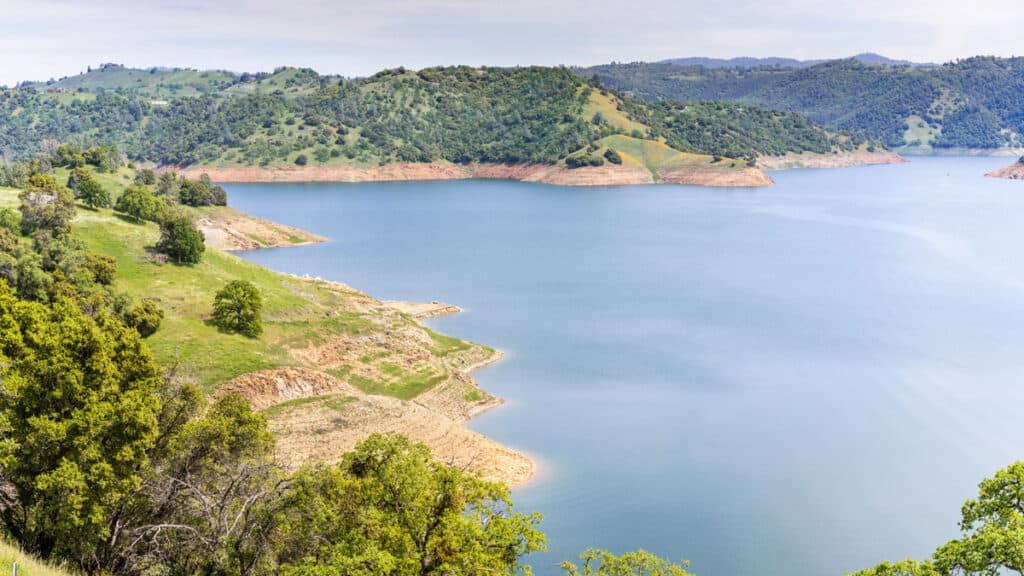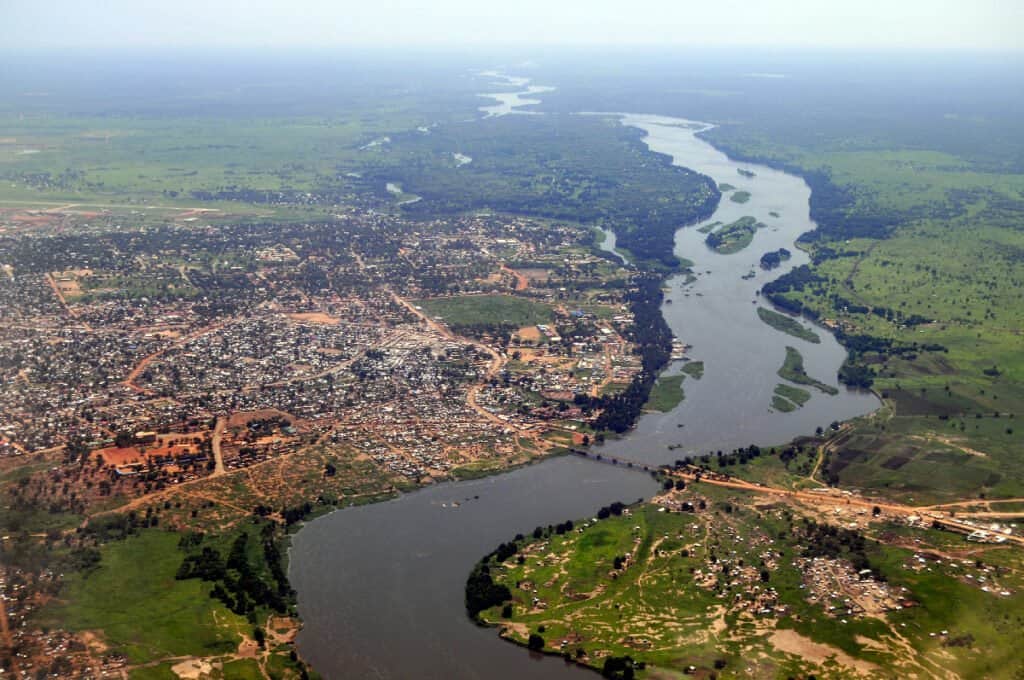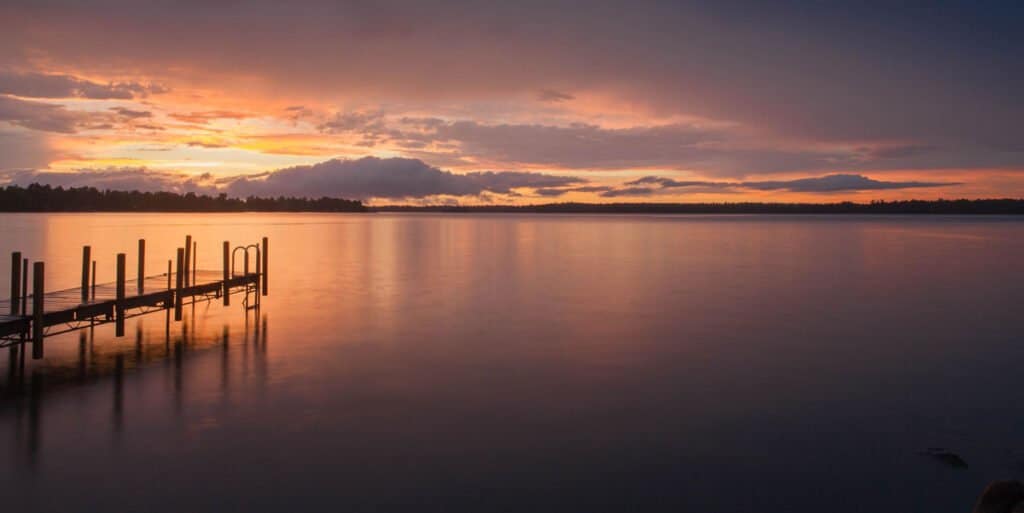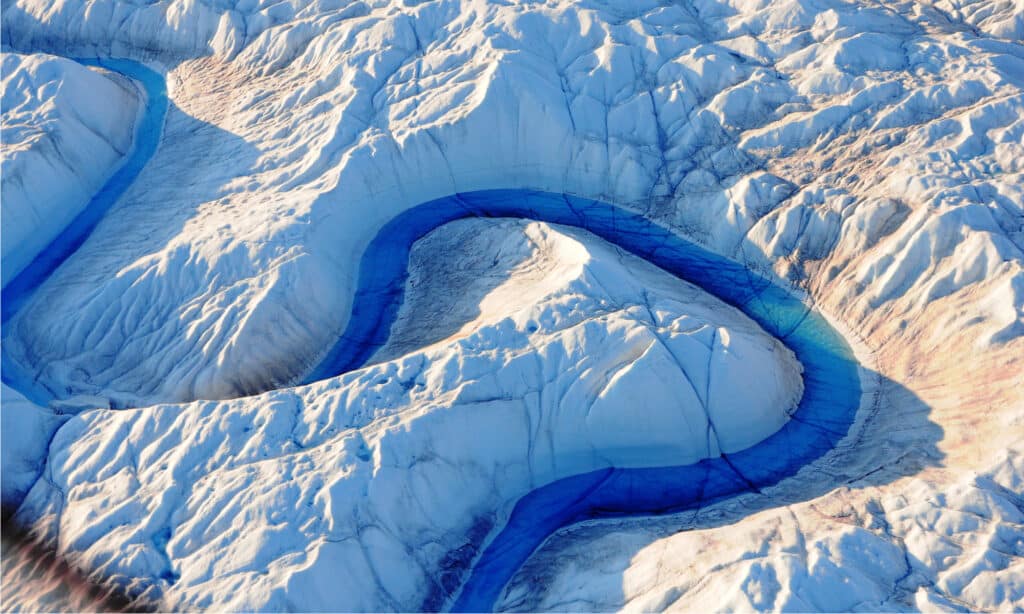From reptiles and mammals to insects, all living creatures need water. Many species need freshwater, a relatively rare sort of water on a planet where salty oceans count for 96% of all water. However, freshwater can be found in many places, including rivers and lakes. These are two distinct types of water bodies, but they can start to blur together if you don’t know the differences. Today, we’re examining a lake vs river to show you the greatest differences between the two. By the time we’re done here, you’ll know how to tell a lake from a river with ease!
What is a Lake?

Some lakes are natural, and others are man-made
©iStock.com/Sundry Photography
Lakes are usually defined as a deep body of persistent standing water that is surrounded by land, supplied water by streams, rivers, and rain, and can be man-made or natural. Lakes are typically freshwater, but some saltwater lakes exist as well.
What is a River?

The Nile River was once considered the longest river in the world, and it’s the longest in Africa
©iStock.com/Phototreat
A river is a moving body of water that has boundaries in the form of banks and drains into another body of water. Rivers are almost always freshwater, but they can turn brackish near their outlets into seas or oceans.
Comparing a Lake and a River

| Lake | River | |
|---|---|---|
| Water Movement | – Persistent, standing body of water – Movement is possible due to the wind, but lacks a constant current | – A moving body of water with a fast-moving current due to the river’s flow facilitated by gravity |
| Boundaries | – Surrounded by land – Water supplied by streams, rivers, and rain | – Only bounded by a riverbank – Flows from one area and often outlets into another body of water, like an ocean |
| Creation | – Naturally occurring – Man-made | – Naturally occurring – Flow of water can be changed with dams, but typical rivers can’t be man-made |
| Water Type | – Freshwater – Saltwater – Brackish | – Vast majority are freshwater – Brackish near sea outlets |
The Key Differences Between a Lake vs River

Lakes can be several thousand square miles in size
©iStock.com/5longhausers
The greatest differences between a lake and a river are the presence of boundaries, water type, and method of creation. Lakes are enclosed by land, can be freshwater, saltwater, or brackish, and may be natural or man-made, but rivers are only bordered by their banks, contain primarily freshwater, and are naturally occurring.
These unique qualities demonstrate the most recognizable differences between a lake and a river. Yet, there are other elements that we need to examine to fully understand these different bodies of water.
Lake vs River: Water Movement
River water moves all the time, but lake water does not. Lakes are persistent, standing bodies of water. The water does not have a natural current. That doesn’t mean lakes can’t have a current, though. When the wind blows, a current can form.
Rivers have a constantly natural current due to the flow of water. Rivers flow toward their outlet, and gravity facilitates that movement. From the time water enters the river, it’s moving.
Thus, if a body of water is moving at a rapid, constant pace, it’s not going to be a lake.
Lake vs River: Boundaries
By definition, lakes are surrounded by land. They are fed by rainwater, streams. and rivers, but these bodies of water do not have outlets into other larger bodies of water.
Rivers are not landlocked. Instead, they are bounded only by their banks. Rivers flow until they reach an outlet area, and that can be a larger river or the ocean. For example, the Mississippi River flows through 2,200 miles of the United States before it reaches the Gulf of Mexico.
Lake vs River: Creation
Lakes are unique in that they can be naturally occurring or man-made. Natural lakes occur when a depression in the earth’s surface is filled with water. That’s a rather simple process and one that can take many forms. However, man-made lakes are usually the product of damming a river so that the water can be turned into a reservoir for drinking. The U.S. alone has over 53,000 man-made lakes.
Rivers are only naturally occurring. The amount of effort it would take to make a true artificial river would be staggering. Not to mention that working with that much moving water would be incredibly dangerous. Although some building projects claim to be artificial rivers, they are complex systems of pipes and pumps, not moving bodies of water flowing over the earth.
Lake vs River: Water Type
Lakes can be saltwater or freshwater, but rivers are almost entirely freshwater. The majority of lakes are freshwater, but they can also be saltwater. For example, the Great Salt Lake is highly saline and is believed to be about 10 times saltier than the ocean.
Aside from freshwater and saltwater, lakes can also be considered brackish. Brackish water is a type of water that is more saline than freshwater but not as salty as the ocean.
Rivers can be freshwater or brackish. Since many rivers flow with water that has traveled through the hydrologic cycle, the river water is fresh instead of saline. Of course, every river’s makeup is a little different.
As the water approaches the mouth, the freshwater can mix with saline water. The large volume of saltwater and freshwater mixing together produces brackish water. The unique composition of the water in this area can support many different lifeforms, such as oysters or even river otters.
How Rivers Sometimes Form Lakes

Over time, those wide turns could create new paths for the water
©Daphne Nilsson/Shutterstock.com
In some cases, rivers can form what is known as an oxbow lake. Meandering rivers, those that form with wide curves, can change courses over time. When the water from the river completely erodes through one of the curves, a new and shorter path is created for the water. Thus, the water follows that pathway instead of the original river.
Sometimes, humans create these lakes when they develop canals to reduce flooding or change the course of the water.
These lakes sometimes dry up completely without a source of water, but some of them thrive as water meadows, swamps, and other types of unique ecosystems that draw animals.
The photo featured at the top of this post is © iStock.com/SL_Photography
Thank you for reading! Have some feedback for us? Contact the AZ Animals editorial team.






